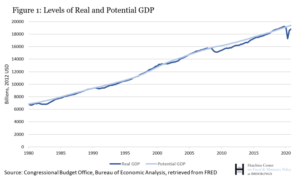Humanity has been banking for about 5,000 years.
In that time there have been three competing theories about where the money comes from when a commercial bank makes loans.
But, believe it or not, it wasn’t until 2014 that anyone ran an actual experiment to answer this question.
The person who ran that experiment is Professor Richard A. Werner, a Professor of Banking and Finance at Linacre College, University of Oxford.
He published the results in a paper titled “Can banks individually create money out of nothing? – The theories and the empirical evidence“.
How can it be that economists and bankers were willing to argue about this for forever and no one thought to run an experiment until 2014?
Beats me.
The video below is Professor Werner being interviewed by Bostjan Usenik on this topic.
I encourage you to watch it, it’s just under 16 minutes long, but if that’s “too long – won’t watch” for you, I’ve summarized the main points of the interview below the video.
Table of Contents
Commercial bank lending: Three competing theories
There are three theories of banking, or more precisely three theories on when banks make loans, where does the money come from?
- Loanable funds theory
- Franctional reserve theory
- Create creation theory
Loanable funds theory
The idea here is that banks are intermediaries between savers and borrowers.
Per Professor Werner, this is the dominant theory today, and this video was published in Nov of 2020.
The idea is the people who save money deposit it in banks, and those deposits are then loaned to borrowers.
Fractional reserve theory
This is an older theory.
The idea here is that individual banks are financial intermediaries, they do loan out deposits.
But the banks interact with each other within the banking system, and as they do so money is being created, but only in aggregate through a diffused process of some kind.
This theory requires excess reserves at the central bank, and that’s the money that gets loaned out.
Credit creation theory
This is the oldest theory.
This theory was dominant until the 1920s when it was displaced by the fractional reserve theory.
This is the most shocking of the three theories.
It claims that both of the other theories are wrong.
It says that banks are NOT financial intermediaries.
Not on an aggregate basis and not on an individual basis.
Banks are creators of money, and not just in the aggregate as the fractional reserve theory states.
Each individual bank creates money when it gives out a loan.
This is only indirectly related to deposits.
Deposits are not being lent out.
Reserves are not being lent out.
Instead, the bank creates new money, which adds to the money supply, when it makes a loan.
How long have people been arguing about this?
For at least the last 100 years.
How can we find out for sure?
Run an experiment, that’s how.
Per Professor Werner, there’s no point in anyone arguing about this when it’s possible to run an experiment and find out.
So that’s what he did.
And why again do we not know this?
Two reasons:
- Bankers have not been upfront and clear of the mechanics of how this works.
- No one ran an experiment to find out.
So, how did he do his experiment?
He found a bank that would collaborate with him.
He needed to take out a real loan, such that he could withdraw the money and deposit it at a different bank, and he needed to be able to look inside their system to determine where the money they loaned him came from.
He arranged to borrow 200,000 euros.
In each of the three theories, they disagree on where the money being loaned comes from:
- Local bank deposits
- The banks reserves
- Thin air
So this is how he determines which theory is right.
And…. the conclusion?
He documented the results of his experiment in two papers.
- The first one is the paper I linked at the top of this blog post.
- The second one is: A lost century in economics: three theories of banking and the conclusive evidence.
As he got the money, he observed that:
- The bank did not draw down any deposits.
- The bank did not use their reserves.
- The bank opened an account is in name, the 200,000 euros appeared in this account, but they did not “come from” anywhere.
The money placed into his account, the account the bank created for him, was newly invented out of nothing.
The credit creation theory is right…
… and the loanable fund’s theory and the fractional reserve theories are wrong.



